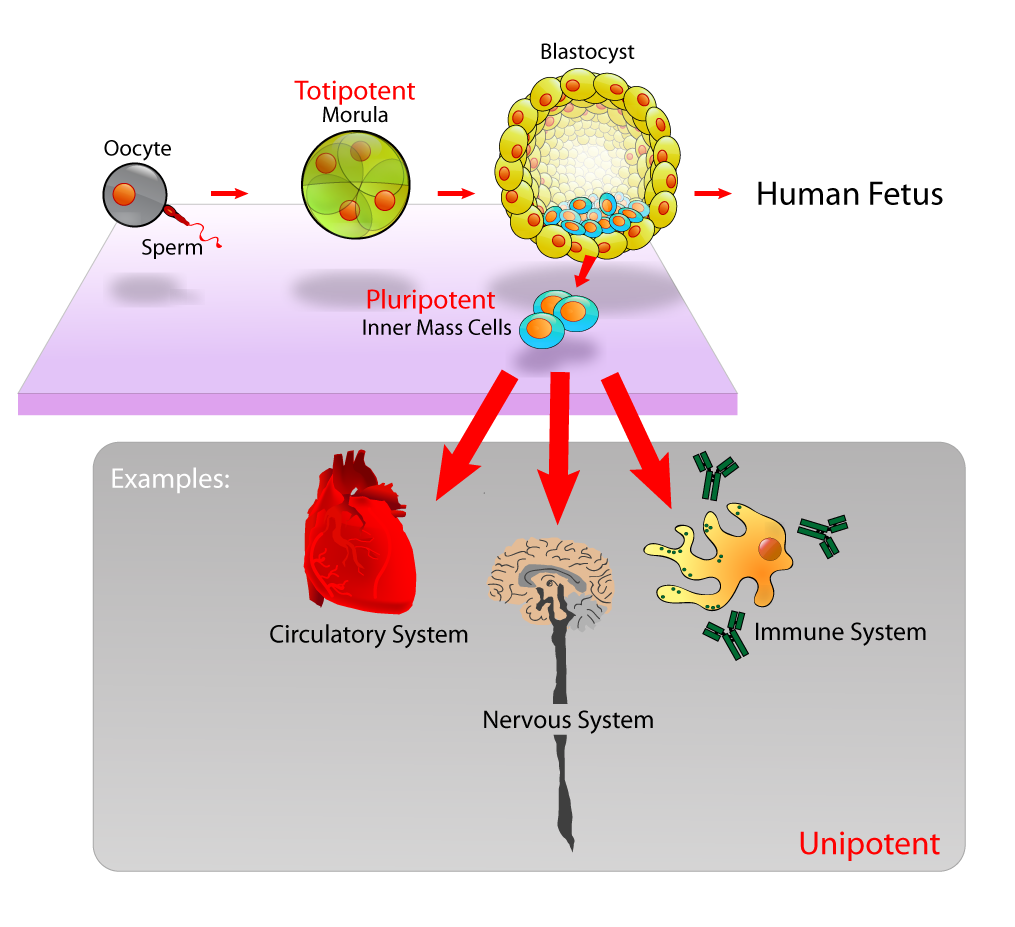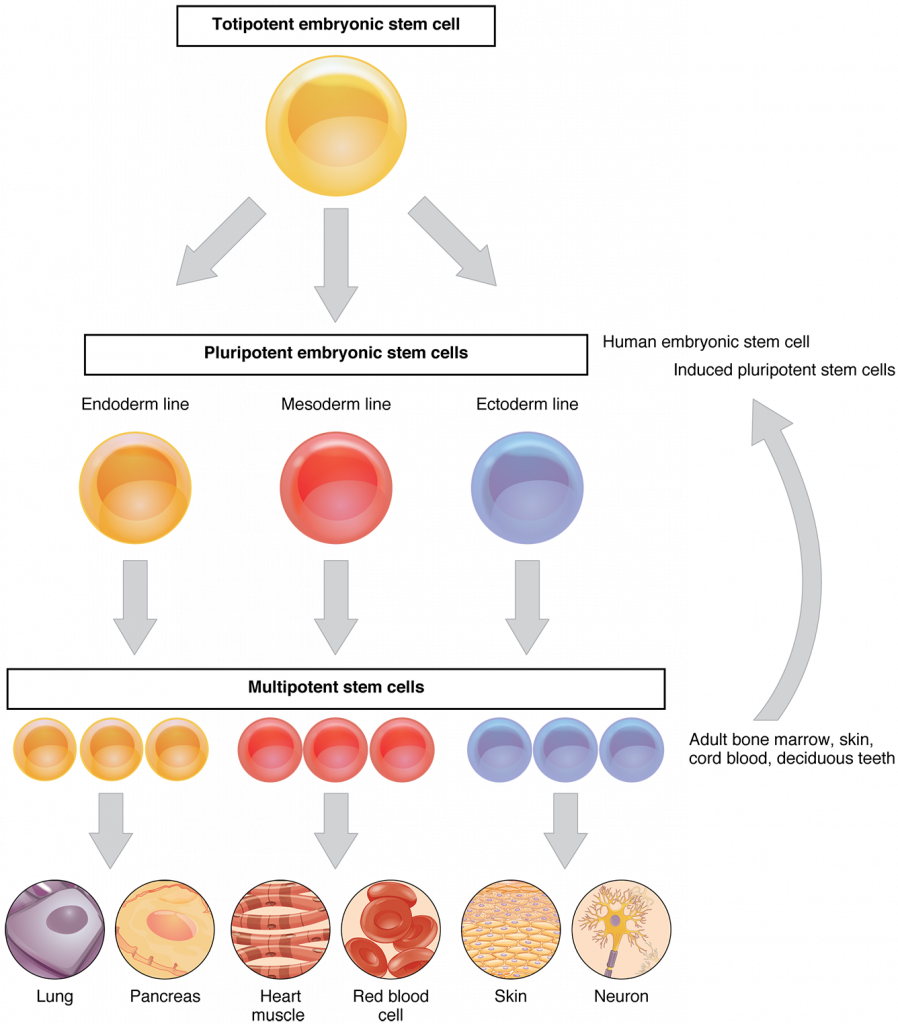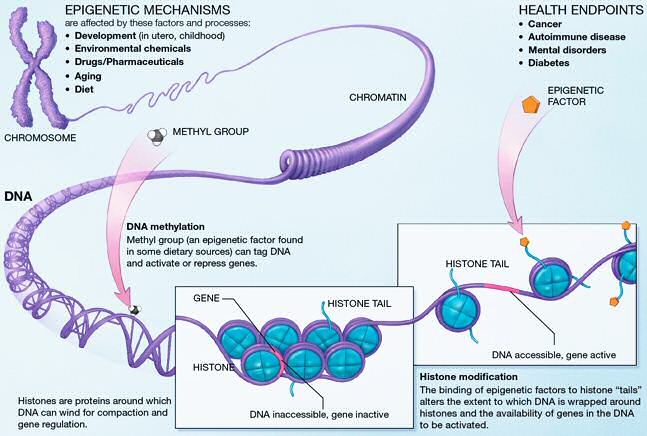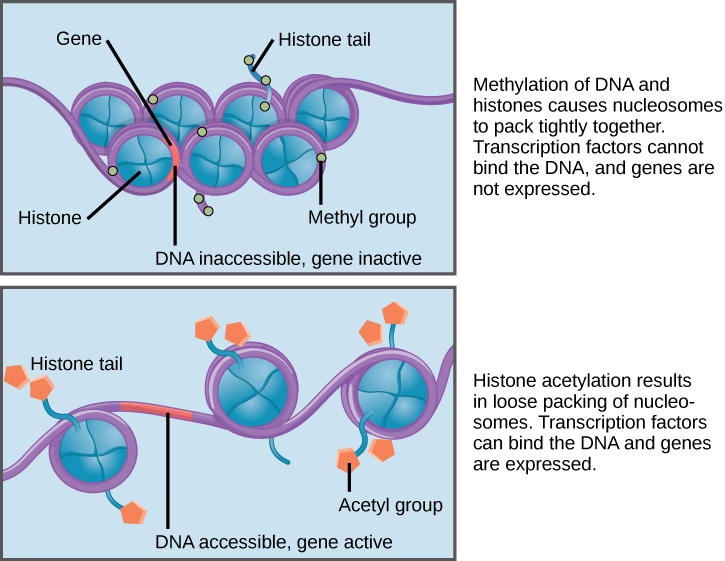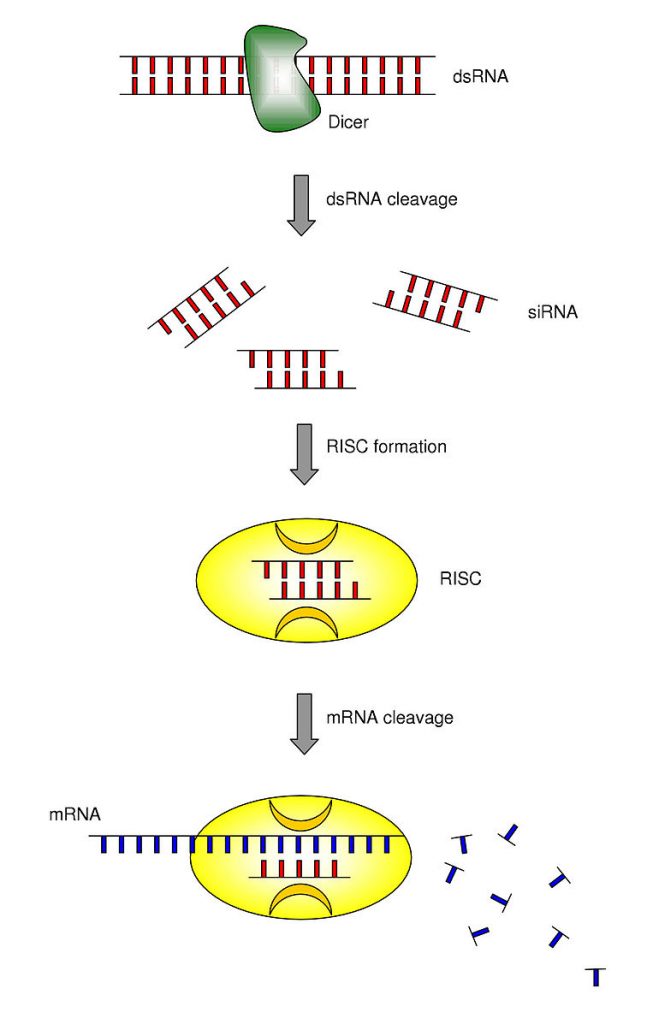Contents
Stem Cells & Controlling Protein Synthesis
Stem Cells
Multicellular organisms have a diverse range of specialized cells that all originate as undifferentiated stem cells. Stem cells are undifferentiated cells that can continually divide and become specialized. Differentiation is the process by which stem cells become specialized.
There are different types of stem cells that have different differentiation abilities. These are totipotent, pluripotent, multipotent, and unipotent stem cells.
Totipotent cells can divide and produce any type of body cell. During development, totipotent cells translate only part of their DNA, resulting in cell specialization. Totipotent cells occur only for a limited time in early mammalian embryos.
Pluripotent cells are found in embryos and can become almost any type of cell. For this reason, they are used in research with the prospect of using them to treat human disorders. These stem cells could be used to regrow damaged cells in humans, such as replacing burnt skin cells, or beta cells for type I diabetics or neurons in Parkinson’s disease sufferers. There are issues with this as sometimes the treatment doesn’t work, or the stem cells continually divide to create tumors. Additionally, ethically there is debate on whether it is right to make a therapeutic clone of yourself to make an embryo to get the stem cells to cure a disease, and then destroy the embryo. Is it safe or even sensible to clone humans and to destroy embryos?
Multipotent and unipotent cells are found in mature mammals and can divide to form a limited number of different cell types. Multipotent cells, such as in bone marrow, can differentiate into a limited number of cells, whereas unipotent cells can only differentiate into one type of cell. Unipotent cells are used in the formation of cardiomyocytes.
Sources of Stem cells in Mammals
Embryos, up to 16 days after fertilization, contain stem cells that are pluripotent and can differentiate into any type of cells. Umbilical cord blood contains stem cells which are multipotent, like adult stem cells. The placenta has stem cells that can develop into a limited number of specialized cells. Adult stem cells, such as in the bone marrow, can produce different cells to repair those within a particular tissue or organ.
There are pros and cons of using stem cells to treat human disorders. Induced pluripotent stem cells (iPS cells) can be produced from adult somatic cells using appropriate protein transcription factors to overcome some of the ethical issues with using embryonic stem cells.
iPS cells are created from adult unipotent cells. These cells, which can be from almost any body cell, are altered in the lab to return them to a state of pluripotency. To do this, the genes that were switched off to make the cell specialized must be switched back on. This is done using transcription factors. They are very similar to embryonic pluripotent stem cells, but do not cause the destruction of an embryo and the adult can give permission. Also, the iPS have shown a self-renewal property, in that they can divide indefinitely to give limitless supplies. For these reasons, they could be used in medical treatment instead of embryonic stem cells.
Control of Transcription
In eukaryotes, transcription of target genes can be stimulated or inhibited when specific transcription factors move from the cytoplasm into the nucleus. Turning on/off particular genes in a cell is what enables them to become specialized.
Transcription Factors
Transcription of a gene will only occur when a molecule from the cytoplasm enters the nucleus and binds to the DNA in the nucleus. These are called transcription factors, and each one can bind to different base sequences on DNA, and therefore initiate transcription of genes. Once bound, transcription begins, creating the mRNA molecule for that gene which can then be translated in the cytoplasm to create the protein. Without the binding of a transcription factor, the gene is inactive, and the protein won’t be made.
Oestrogen
Oestrogen is a steroid hormone that can initiate transcription. It does this by binding to a receptor site of a transcriptional factor. When it binds to the transcriptional factor, it causes it to change shape slightly, and this change in shape makes it complementary and able to bind to the DNA to initiate transcription.
Epigenetics
Epigenetics is how the environment interacts with the genome. Factors such as diet, stress, and toxins can add chemical tags to the DNA, and this can control gene expression in eukaryotes. In this way, epigenetics involves heritable changes in gene function, without changes to the base sequence of DNA. Epigenetic inheritance, as well as DNA inheritance, takes place.
The layer of chemical tags on the DNA is called the epigenome, and this impacts the shape of the DNA-histone complex and whether the DNA is tightly wound so won’t be expressed or unwound so it will be expressed. If the DNA is tightly wound, then transcription factors cannot bind. Therefore, the epigenome, which is due to changes in the environment, can inhibit transcription.
Chemical Tags
Increased methylation of the DNA:
When methyl groups are added to DNA, they attach to the cytosine base. This prevents transcriptional factors from binding and attracts proteins that condense the DNA-histone complex. In this way, methylation prevents a section of DNA from being transcribed.
Decreased acetylation of associated histones:
If acetyl groups are removed from the DNA, then the histones become more positive and are attracted more to the phosphate group on DNA. This makes the DNA and histones more strongly associated and hard for the transcription factors to bind.
Treatment of Disease
As discussed in the cancer lesson, epigenetics can lead to the development of cancerous tumors if tumor suppressor genes or proto-oncogenes are affected. This has led to research into how this could be manipulated to treat cancer. Drugs can be given to prevent the histone acetylation or DNA methylation that may have caused these genes to be switched on/off and resulted in the cancerous tumor formation. Tests can also be used to see if a patient has abnormal levels of methyl and acetyl as an early indicator of cancer.
RNA interference (RNAi)
In eukaryotes and some prokaryotes, translation of the mRNA produced from target genes can be inhibited by RNA interference (RNAi). This is when an mRNA molecule that has already been transcribed gets destroyed before it is translated to create a polypeptide chain. This is done by a small interfering RNA (siRNA). An enzyme can cut the mRNA into siRNA, and one strand of the siRNA then combines with an enzyme. This siRNA-enzyme complex will bind via complementary base pairing to another mRNA molecule, and once bound, the enzyme will cut up the mRNA so it cannot be translated.
- What is the steroid hormone that can control transcription?
- estrogen
- What is methylation?
- Your answer should include: methyl / DNA
- What is acetylation?
- Your answer should include: acetyl / histone
- Which stem cells can differentiate into any type of cell?
- totipotent
- Which stem cells have been developed to help overcome the ethical issues with using embryonic stem cells?
- iPS cells
- What is a stem cell?
- Your answer should include: undifferentiated / divide / specialized
- What does RNAi stand for?
- Your answer should include: interfering / RNA
- What are siRNA?
- Your answer should include: small / interfering / RNA

